Mother Nature as a role model: healthier calves thanks to slow feeding
7. Juni 2024 — Calf Feeding — #Sucking #CalfExpert #Casein #Calf Health #MilkBar #NativeCalfConcept #Teat bucket #Drinking speed #Digestibility #ScienceThis is certainly also advisable when feeding calves. We separate calves from cows for economic reasons and feed them using "unnatural" teat buckets or a calf feeder. Consumers often criticise this approach. Are they right?
This article is about
| Suckling on the udder | Feeding at the bucket or calf feeder (CF) | |
|---|---|---|
| Amount of milk per day | 6 – 10 litres | 6 – 12 litres |
| Number of feeds per day | 6 – 10 | 2 (bucket), 4 – 6 (CF) |
| Quantity per visit | Approx. 1 litre | 3 - 5 litres (bucket), 2 - 3 litres (CF) |
| Drinking speed | Approx. 200 ml/min | 700 – 1,000 ml/min |
| Daily weight gain | > 1,000 g | 500 – 1,000 g |
| A healthy environment | Generally good health, hardly any suckling. | Frequent diarrhoea and respiratory disorders. Often suckling in group housing. |
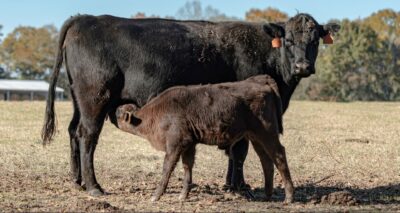
Even if other factors have an influence on these two systems (housing system, whole milk or CMR feed, concentrated feed etc.), the biggest difference lies in the feeding speed and frequency of feeding.
A calf needs to suckle intensively on the udder. Nudging the udder causes the cow to produce oxytocin, thereby encouraging the release of milk. However, without suckling actively, the calf would not receive any milk from the udder.
Calf feeders and teat buckets often have a non-return valve. A very long teat (up to 10 cm - cow teats are often only 5 to 6 cm long) allows the calf to drink milk both by suckling and by squeezing the teat. Squeezing the teat ensures that plenty of milk is ejected into the calf's mouth. Calves can then often be observed to either stop drinking or even choke.
Improved digestibility
Short, slow-action teats are very common in New Zealand. These teats are designed to reduce drinking speed and work without a non-return valve. In other words, if the calf simply presses on the teat, it pushes the milk back into the bucket. It must suckle actively if it wishes to obtain milk.
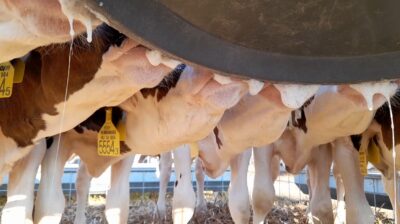
This suckling action is difficult for calves. They drink more slowly and have to work harder for their milk, resulting automatically in an increased flow of saliva. This saliva is clearly visible from the outside, but the calves swallow most of it with their milk.
Saliva has several benefits for the digestion of milk and for calves' health:
- It contains lactoferrin lactoperoxidase, a germ-inhibiting enzyme complex that strengthens the calves' immune system.
- Since it has a high pH value, the saliva buffers the acidic contents of the abomasum. The milk can coagulate slowly in the abomasum, facilitated by the slow intake of milk.
- In addition, enzymes in saliva assist the digestion of fat and break down lactose into the easily digestible simple sugars glucose and galactose.
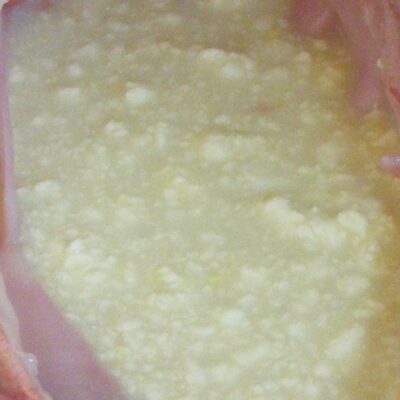
Tests by R. McInnes et al. (2015) have shown that large amounts of lactose were broken down in the abomasum shortly after milk intake when calves drank slowly from hard teats producing a lot of saliva. A very fine structure of coagulated casein was also found in the abomasum.
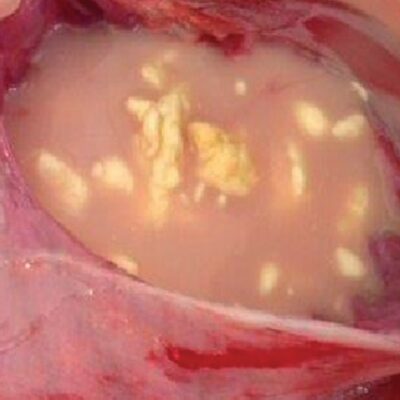
The same test showed that after feeding with easy-action teats, curdled milk formed large, hard-to-digest lumps in the calves' abomasa.
The points mentioned may explain why calves on slow-action teats tend to gain more weight, because milk sugar and proteins are digested better. Even though there is no definitive scientific proof of this, a lot of real-life experience also indicates that milk is more digestible.
Healthier calves
Forcing calves to suckle and therefore feed more slowly, as well as the calves' natural drinking behaviour, promotes the development of the oesophageal groove. This minimises the risk of the animal ingesting rumen fluid. Calves that drink large quantities of milk within a short period also run the risk of uncurdled milk passing from the abomasum into the intestine, where it leads to a massive proliferation of harmful bacteria. In contrast, drinking slowly from heavy-duty teats aids digestion and leads to less diet-related diarrhoea, especially in young calves.
Less suckling
Another interesting aspect is the observation that calves have fewer problems with reciprocal suckling when they are given slow-action teats. Drinking speed is only half to a third of the speed with conventional teats with a non-return valve. This means that the calves spend two to three times as long feeding.
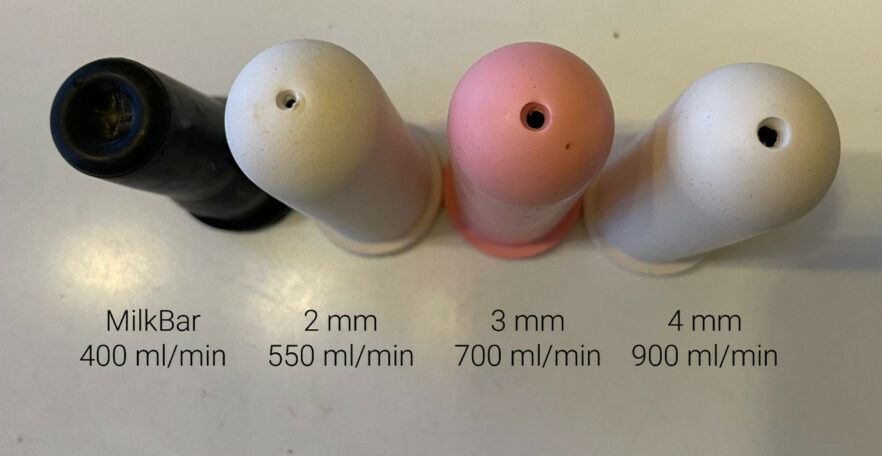
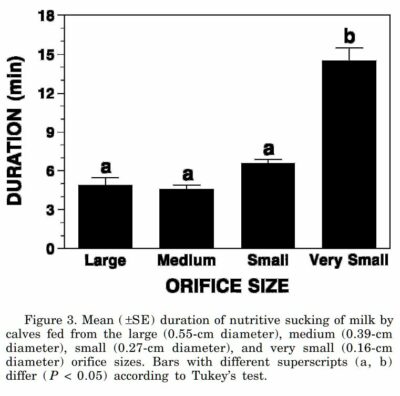
Another advantage of prolonged drinking is that the hormones that control the calf's sucking instinct decrease after a certain time. D. B. Haley et al. („Effects of Resistance to Milk Flow and the Provision of Hay on Nonnutritive Sucking by Dairy Calves“, 1998) found through trials with four different teat hole sizes that drinking duration increased significantly, especially with the smallest teat hole.
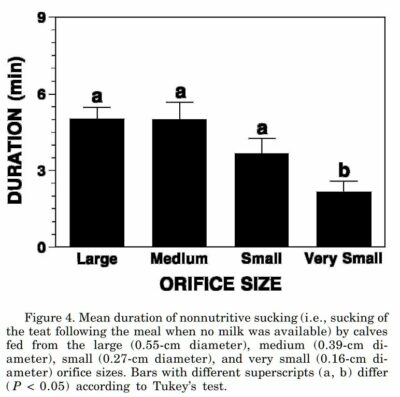
After their milk feed, these calves suckled significantly less on stall equipment or other calves. The calves that finished their feed sooner spent the same amount of time that they had previously spent drinking, suckling again on the empty teat, on stall equipment and on other calves.
Ross McInnes et al. produced similar results in 2015. All animals in the group of calves using the slow-action teat had intact and uninjured teats, while the fast-drinking calves tended to suckle each other. Even their small teats were damaged and the keratin plug that normally closes them was removed. As a result, their udders were not protected against germs entering via this route, which can lead to inflammatory processes in heifers.
Beke Ostendorf's Master's thesis (2019) "Influence of two different calf teats on calf feed intake" comes to the same conclusion. She reports that calves on the slow-action teat lay down in the straw to rest very soon after they had finished feeding.
Less competitive pressure
Beke Ostendorf also calls the slow-action teat the equitable teat. It ensures that tall calves in a calf group all feed for a similar length of time. Individual calves have less of an advantage at the feeder than those on easy-action teats. This is particularly beneficial with large group buckets, for example when 6 calves have to share a quantity of 30 litres of milk. Stealing milk is therefore not a significant problem with these feeder systems.
The correct teat position
The development of the reflex contraction of the oesophageal groove is stimulated not only by the shape and hardness of the teat, but also by the position of the teat.
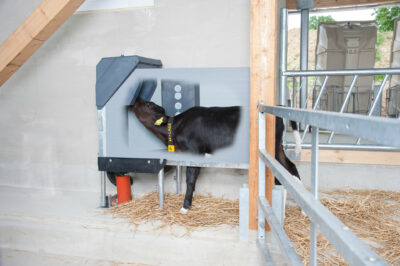
Teats attached horizontally do not correspond to those on an udder, which hang downwards. When drinking from the udder, calves pull the teat slightly to the side. However, it still points downwards at an angle. On modern calf feeders, such as the CalfExpert from Holm & Laue, the teats in the HygieneStation point downwards at an angle of 45°. This makes the calves adopt a natural drinking posture with an elongated neck.
Another factor is the teat height. In the past, a teat height of 70 - 80 cm was often recommended. However, recent practical experience shows that a teat height of only 60 - 65 cm is preferable, as this is closer to the normal height of an udder. At this height, calves have an even more pronounced drinking neck.
High feeding frequency
High milk volumes of over 10 litres per day, as recommended these days, can only be achieved if calves are fed more than twice a day.
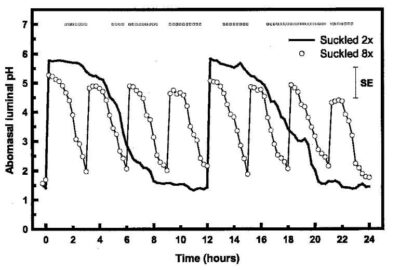
Calves consuming large quantities of milk in just a few feeds lead to extreme pH fluctuations in the abomasum (Ahmed et al., 2002), which can result in gastric ulcers (too acidic an environment, i.e. below pH 3 for a long time) and insufficient coagulation of the milk (too alkaline an environment, i.e. above pH 5.5 for a prolonged period).
Feeding from a calf feeder is the only alternative for rearing calves as close to nature as possible. Providing several meals a day, each containing 2, or a maximum of 3, litres has proven to be ideal.
Criticism from practice
Despite all the advantages of suckling slowly, many farmers prefer easy-action teats made of silicone or they simply cut the teat opening a little wider. The reason for this is that young calves are easier to train and obtain milk more easily, regardless of whether they suck or push. This is understandable from a labour economics perspective, but is questionable in terms of the improved calf welfare described above.
Manufacturers of slow-action teats, such as Milk Bar, offer easy-action starter teats for easier training.
Conclusion
It is also a good idea to observe what nature does when feeding calves. Besides animal-friendly feed quantities of more than 10 litres per day, the method of milk intake is also important. First, slow-action teats ensure good saliva production, which aids digestion. Second, calves tend to suckle less as a result of prolonged and strenuous feeding. And third, feeding small portions of milk frequently is ideal for calves' digestion.

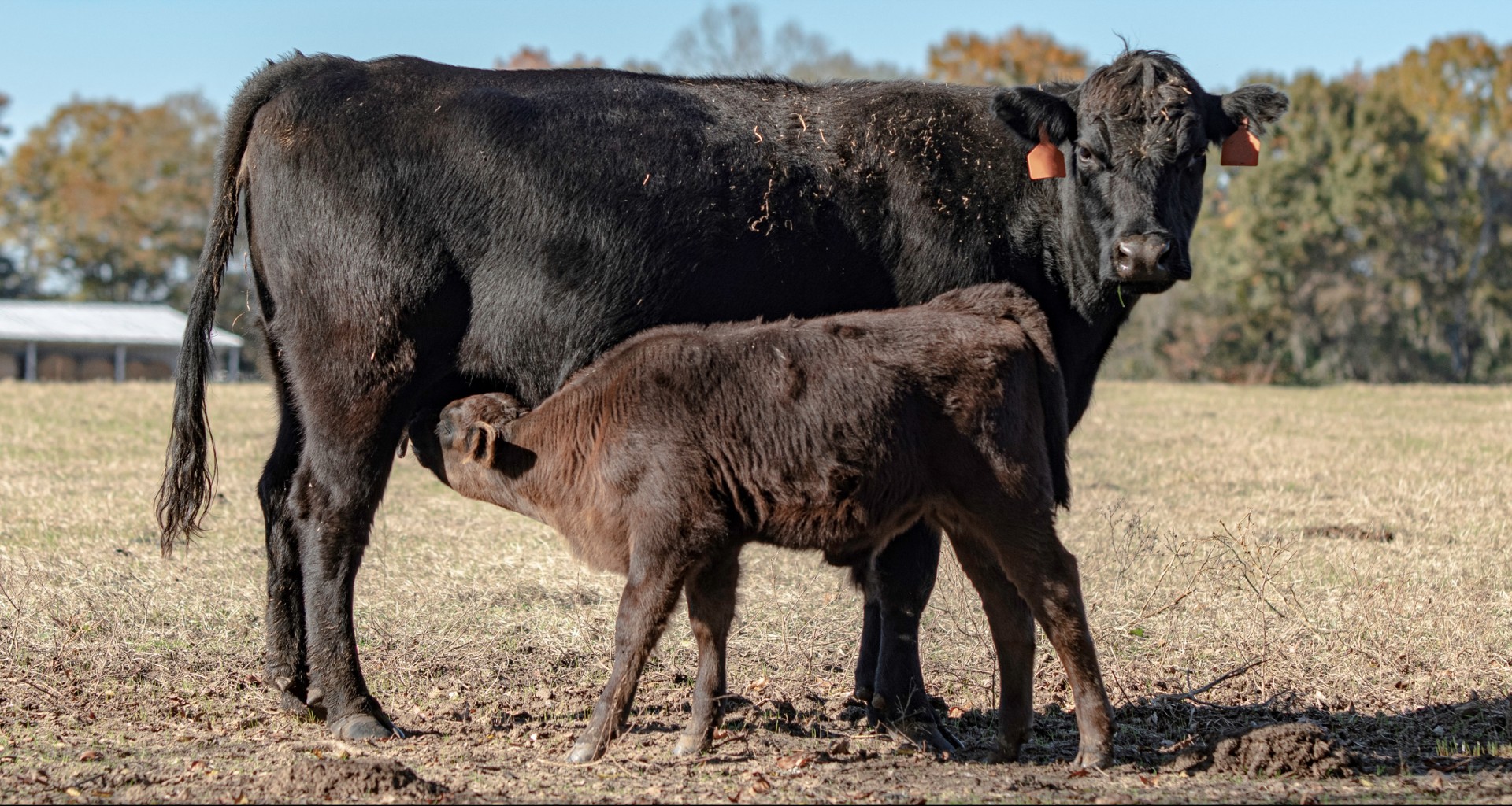
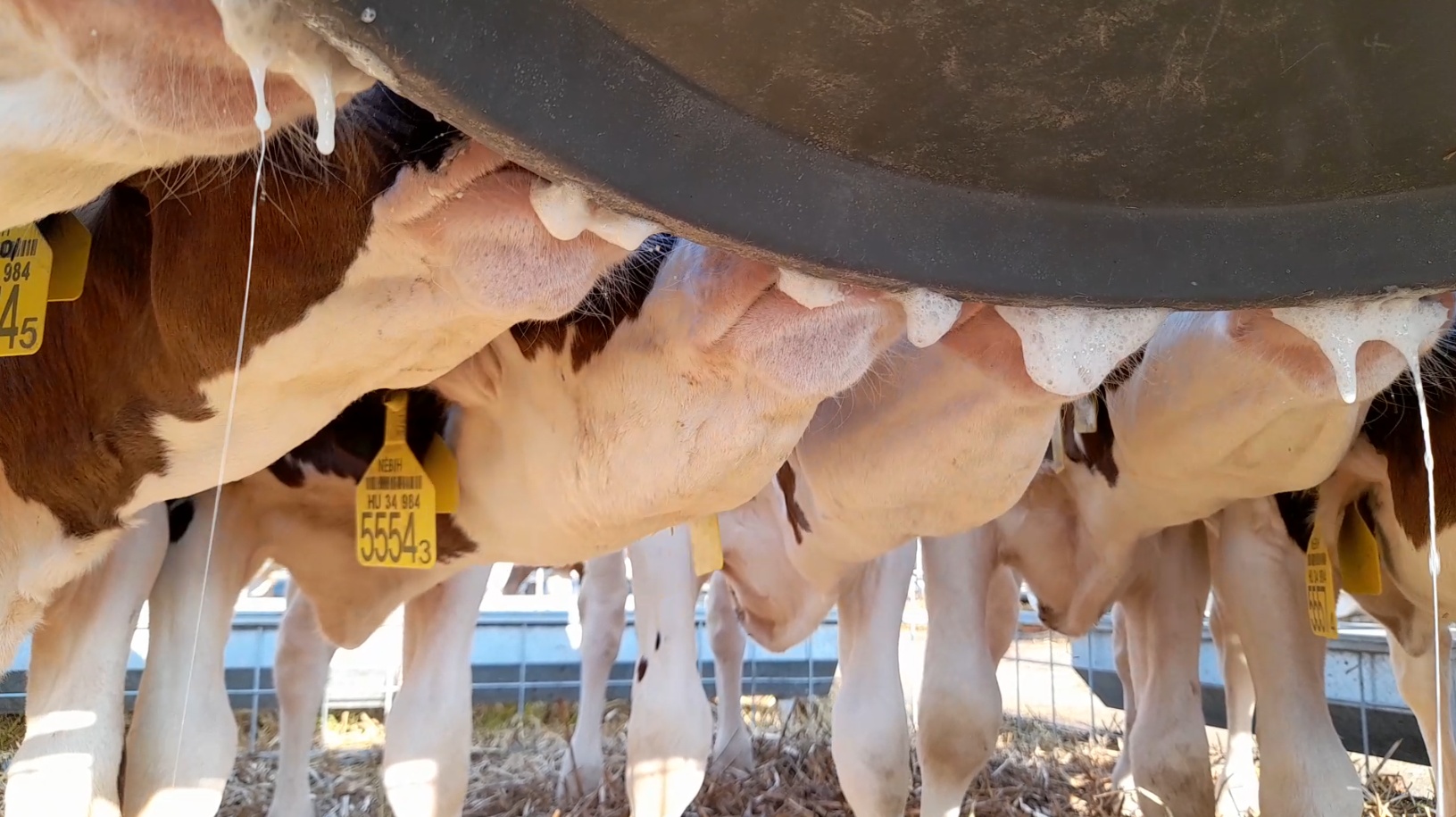
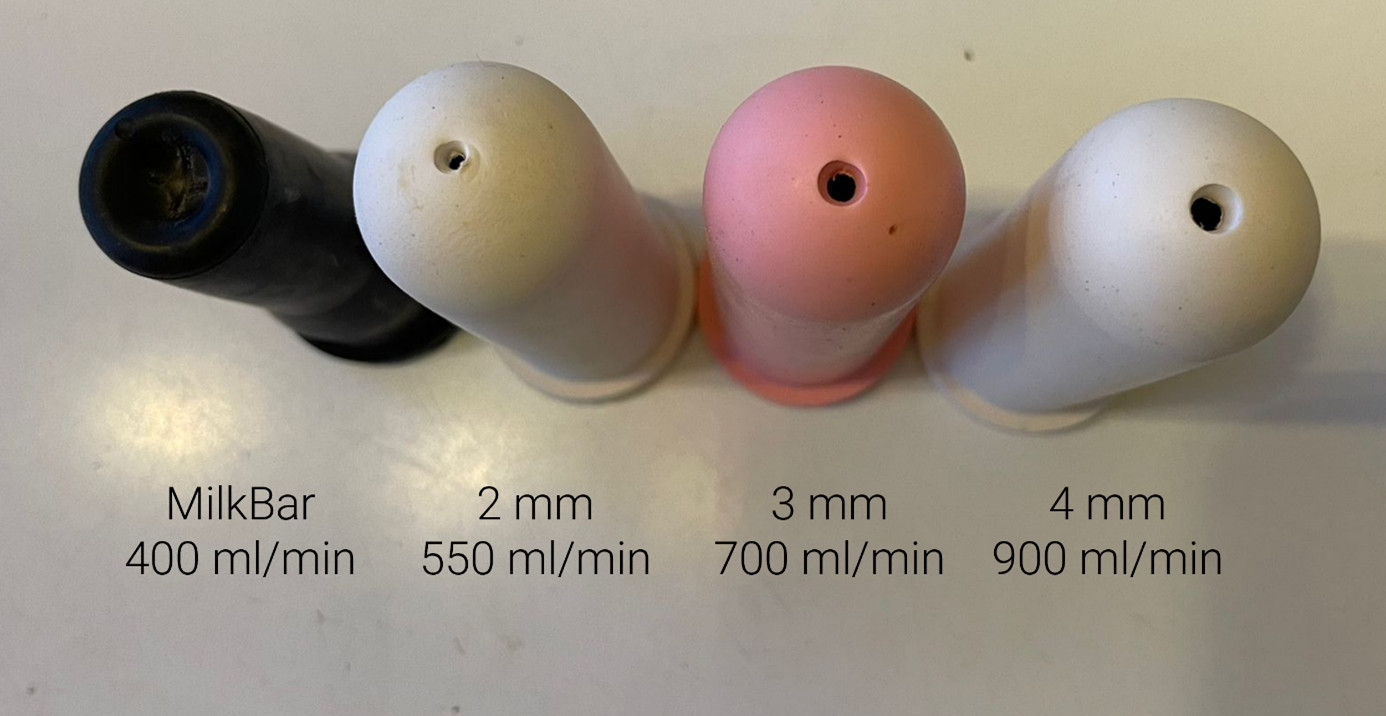 Drinking speeds, measured at the calf feeder with a perforated teat (the speeds at the feeding bucket are significantly higher with conventional teats)
Drinking speeds, measured at the calf feeder with a perforated teat (the speeds at the feeding bucket are significantly higher with conventional teats)
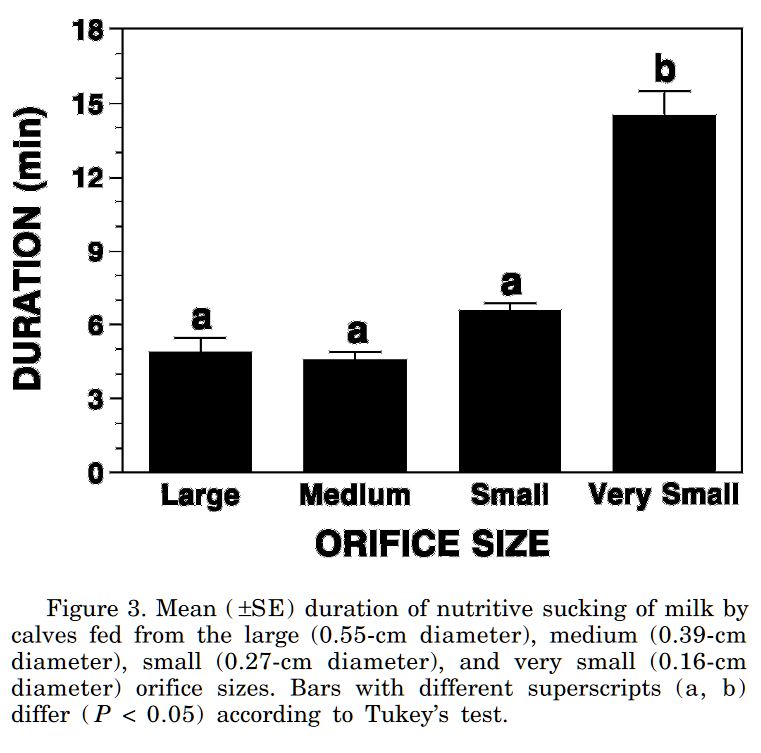 Prolonged suckling with the smallest teat hole
Prolonged suckling with the smallest teat hole
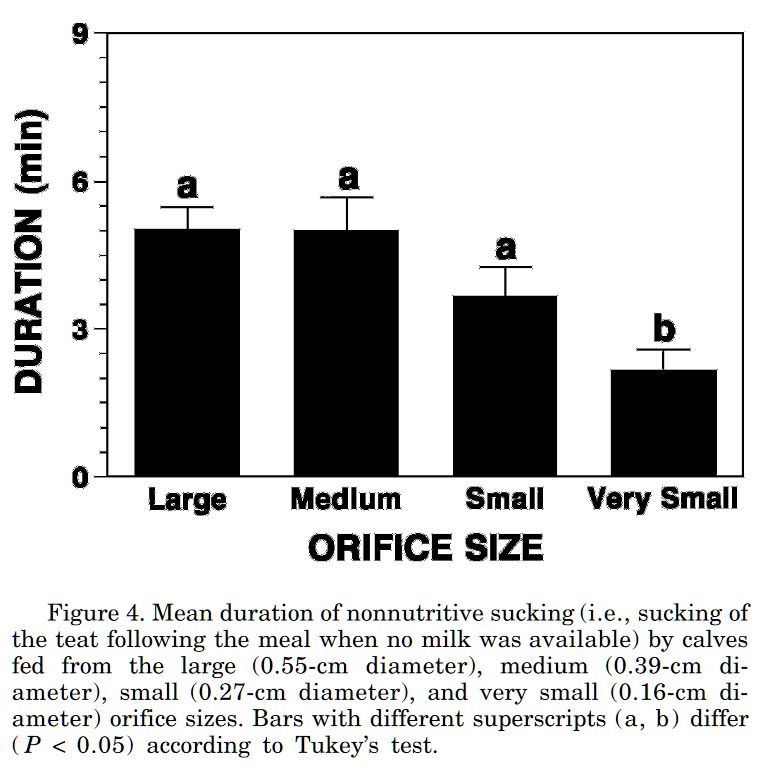 Low cross-suckling with the smallest teat hole
Low cross-suckling with the smallest teat hole
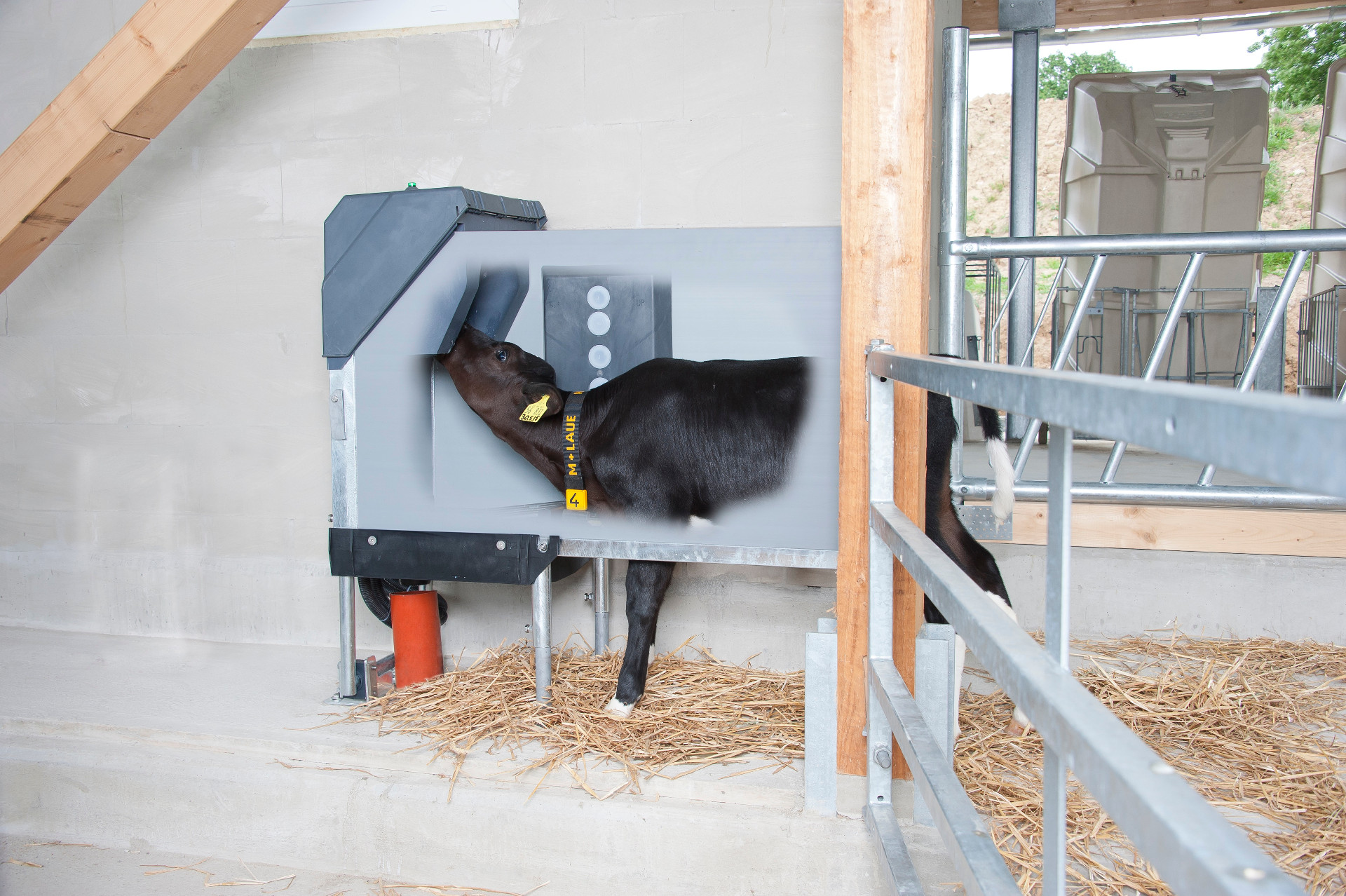
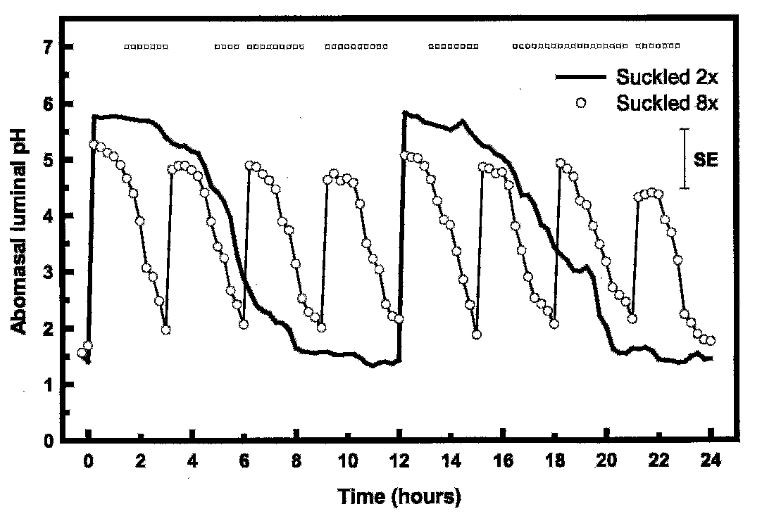 pH level development in the abomasum after feeding 2 or 8 times a day. Daily amount of 12% of body weight.
pH level development in the abomasum after feeding 2 or 8 times a day. Daily amount of 12% of body weight.